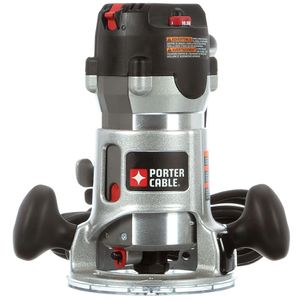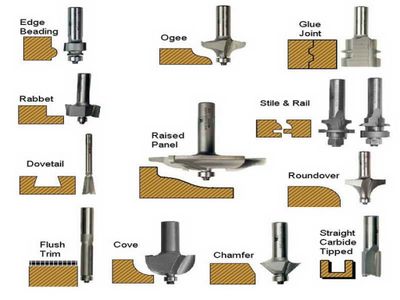Difference between revisions of "Hand Router"
| Line 25: | Line 25: | ||
== Bit Types == | == Bit Types == | ||
| − | [[Image:RouterBits.jpg|400x400px| | + | [[Image:RouterBits.jpg|400x400px|left]] |
Each bit is made for a different job. The wood shop has a wide assortment, although less common types may be unavailable. It should be noted that different bit sizes and profiles will operate better at different speeds. The amount of material the is being removed in each pass as well as the hardness of the wood should determine the speed the router is ran at. | Each bit is made for a different job. The wood shop has a wide assortment, although less common types may be unavailable. It should be noted that different bit sizes and profiles will operate better at different speeds. The amount of material the is being removed in each pass as well as the hardness of the wood should determine the speed the router is ran at. | ||
Revision as of 16:22, 12 March 2019
The hand router is the most dangerous tool in the wood shop, but it can also be one of the most versatile tools. Used in conjunction with the proper jigs and templates, the router can accomplish a wide variety of tasks with relative ease. Holes and channels of varying depths and nearly limitless shapes can be cut. The router can also use special bits to cut bevels and chamfers along the edges of a workpiece.
The current Ace of the Hand Router is Needed (Makerhub@georgefox.edu).
Documentation
Bit Types
Each bit is made for a different job. The wood shop has a wide assortment, although less common types may be unavailable. It should be noted that different bit sizes and profiles will operate better at different speeds. The amount of material the is being removed in each pass as well as the hardness of the wood should determine the speed the router is ran at.
Training
Click on this link for an introductory video on using the router. The enthusiastic video's most important parts happen in the first 8 minutes. Note that we do not have a router table, but one can easily be made. If the proper direction of cut is confusing, this video explains it thoroughly, albeit in a very lengthy fashion. Our router accepts both 1/2" and 1/4" bits, just swap out collets to change bit shank size.


